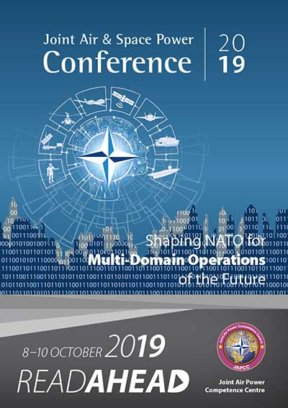A Look at Differing Views on a Developing Concept
The use of the term Multi-Domain Operations (MDO) has increased in popularity over the past decade as military services, those of the United States, in particular, have sought to codify their approach to warfare beyond the traditional confines of land, sea, and air. The term is new enough that, while many in military circles within the US and NATO have heard and even used the term themselves, the term is yet undefined by most nations and by NATO. Moreover, much of what has been written in the past few years concerning MDO bypasses elaborating on or clearly defining MDO, instead focusing on Multi-Domain Command and Control (MDC2). This paper will break from that approach and focus on addressing what can currently be said about MDO, from officially published guidance, and how it differs from previous concepts; notably Joint Operations.
As previously mentioned, neither NATO nor any of its member nations, specifically the US, has published a single unifying definition for Multi-Domain Operations. However, the official NATO Terminology Database, published by the NATO Standardization Office (NSO), does offer a definition for ‘domain’. Yet this definition is specific to the field of Information Technology, and defines ‘domain’ as ‘that part of a computer network in which the data processing resources are under common control’ and ‘the set of possible values of an attribute.’1 This IT specific definition is of little assistance in gaining a clear understanding of what is meant by MDO, at least within NATO. While NATO has not published a definition for the term ‘domain’ (within its Glossary of Terms and Definitions), it does have a definition for ‘environment’2 which seems to be used interchangeably with domain in numerous NATO publications. Moreover, NATO also clearly defines an ‘operational environment’3. However, its definition seems to be more along the lines of conditions and factors than the closer environment term which aligns with the various recognised operational domains within NATO (land, sea, air, and cyberspace).
Without clear, concrete definitions within NATO, the Alliance is forced to look to its member nations. Most (not all) of what is being written and discussed concerning MDO is emanating from the US In 2018 the US Army Training and Doctrine Command defined MDO as ‘how the US Army, as part of the joint force, can counter and defeat a near-peer adversary capable of contesting the US in all domains, in both competition and armed conflict. The concept describes how US ground forces, as part of the joint and multinational team, deters adversaries and defeats highly capable near-peer enemies in the 2025–2050 timeframe.’4 This US Army-centric definition lacks a clear description of MDO usable by services and nations, as it only clarifies the US Army’s approach to MDO. It is important to note the U.S Army’s MDO definition is actually a transition from ‘Multi-Domain Battle’ which is ‘more inclusive of the type of competition that is now underway between the US and other nations’ and takes into account a global competition that doesn’t always involve fighting and battles, and ‘Winning battle is not necessarily winning the competition.’5
The US Air Force offers another national service-focused definition for MDO in the form of MDC2, as ‘the coordinated execution of authority and direction to gain, fuse, and exploit information from any source to integrate planning and synchronize execution of Multi-Domain Operations in time, space and purpose to meet the commander’s objectives.’6 However, this definition is caveated to include the ability to ‘effectively command and control (C2) Multi-Domain Operations to converge air, space, and cyber capabilities to meet the challenges of these contested domains.’7 While this definition begins to detail the intention of MDO, it stops short of discussing all of the various recognised operational domains within the US (or within NATO) and the reader is left to infer a definition of MDO from a definition of MDC2 … a definition new and distinct from Joint Operations.
Joint within NATO is a term used to describe those ‘activities, operations and organizations in which elements of at least two services participate.’8 This definition is generally agreed to mean that two or more services work together and does not necessarily require they do so in an integrated manner. MDO, on the other hand, is seen as a step beyond joint. Indeed, for some, MDO requires ‘coordination beyond just campaign planning to where individual effects are combined at the tactical edge.’9 The specific degree to which MDO moves beyond joint seems to be focused on both the level of integration (within a body with requisite authorities) and expertise in capabilities employed through multiple domains. However, the degree to which MDO moves beyond joint is open to interpretation without clear delineation within NATO or its member nations.
A pessimistic and dismissive view of MDO, as a term, could be as a mere buzzword, synonymous with joint operations. And without clear definitions, it will be difficult to dispel naysayers. In the interim, time and resources are being expended on examining MDO and how NATO, and its member nations, can utilise the concepts contained therein. The discussions and research from these investigations are driving changes in capability development and will have repercussions within the Alliance for years to come. In the short-term, it is imperative that the 29 members of NATO arrive at a clear definition so they can move forward together.












